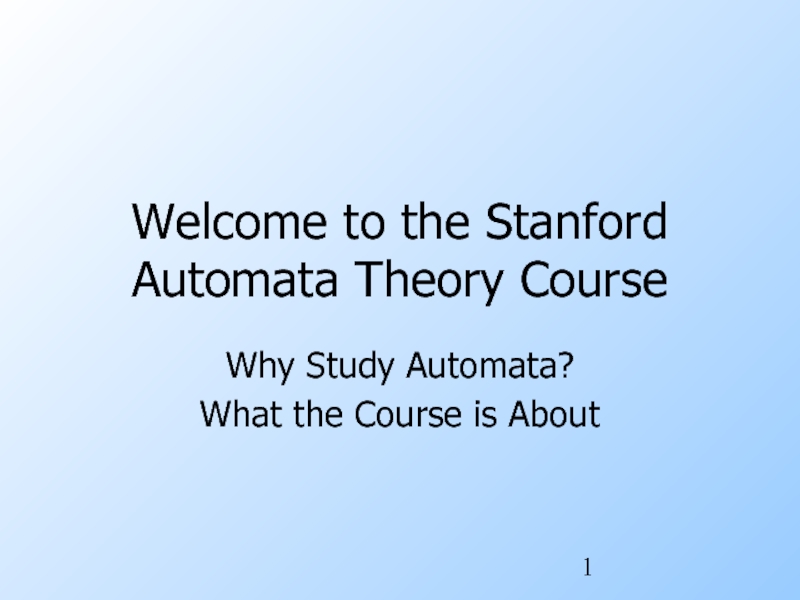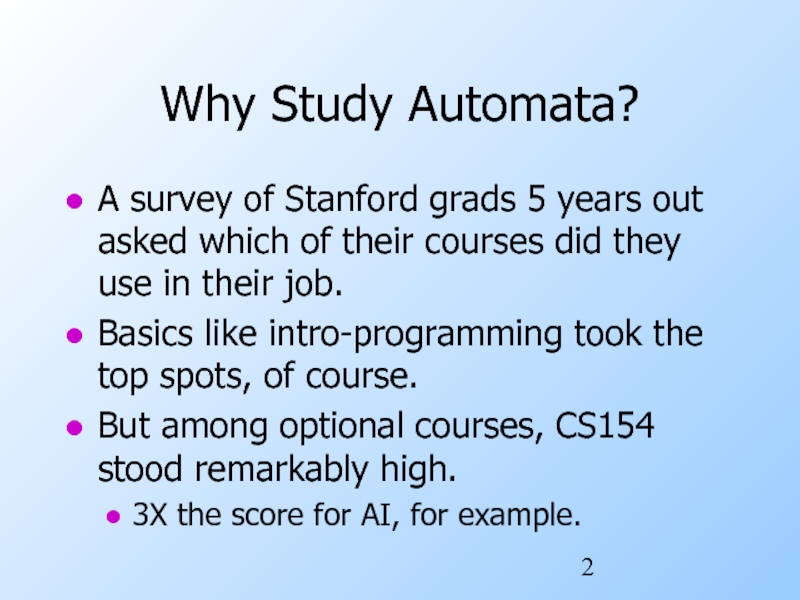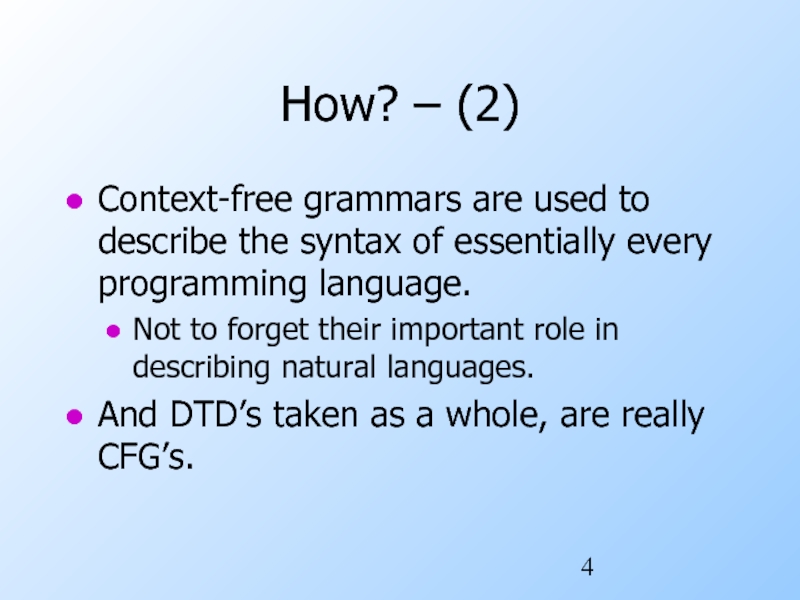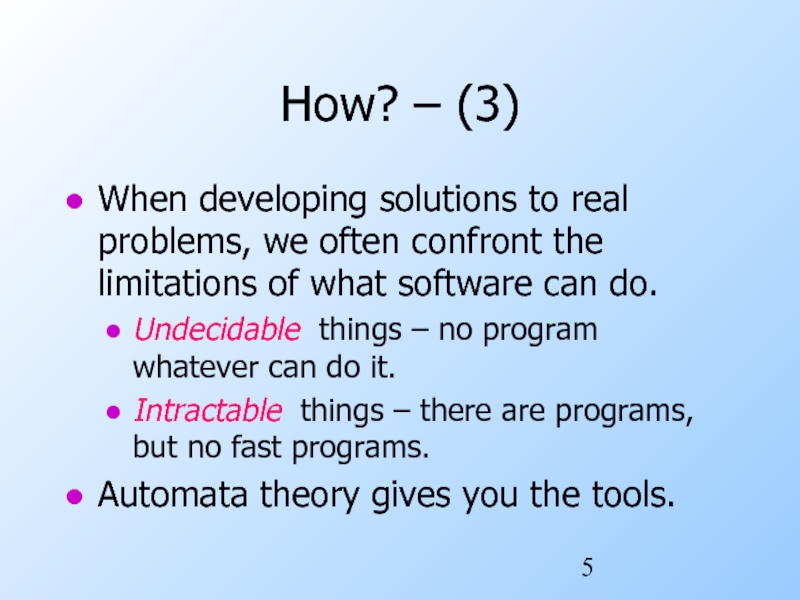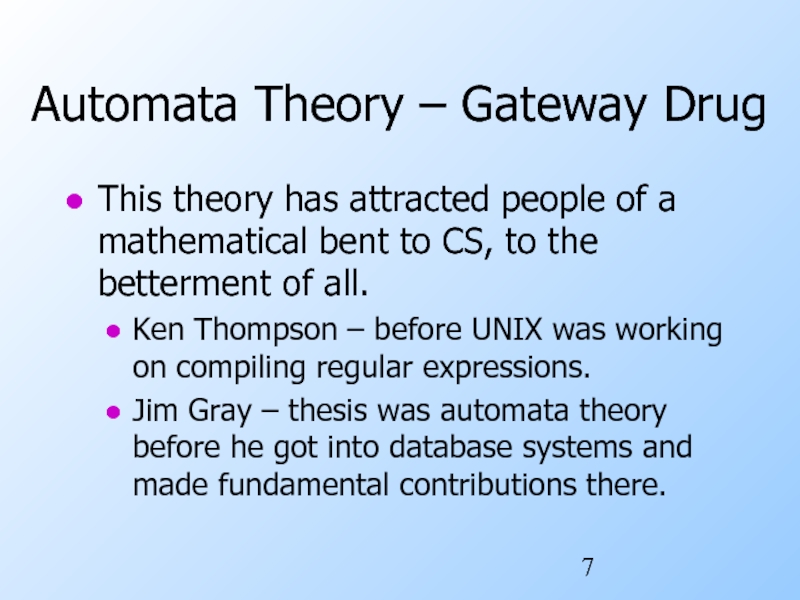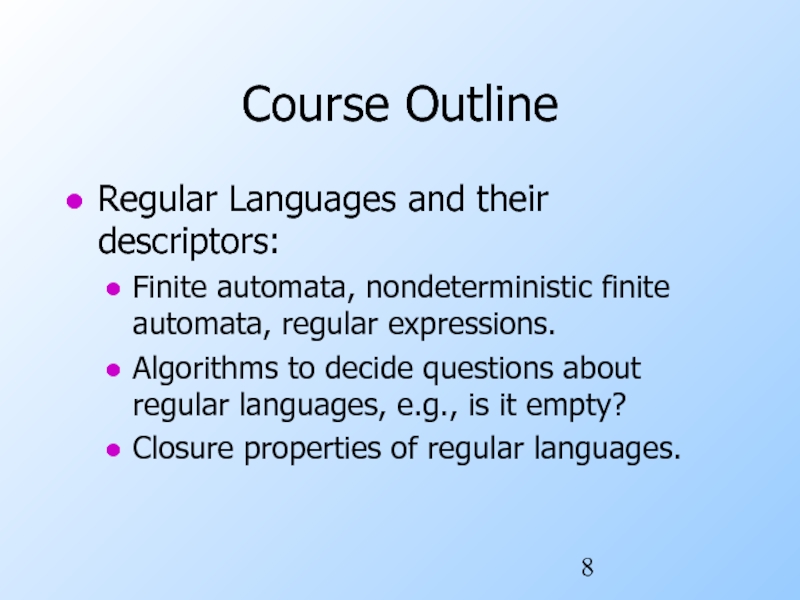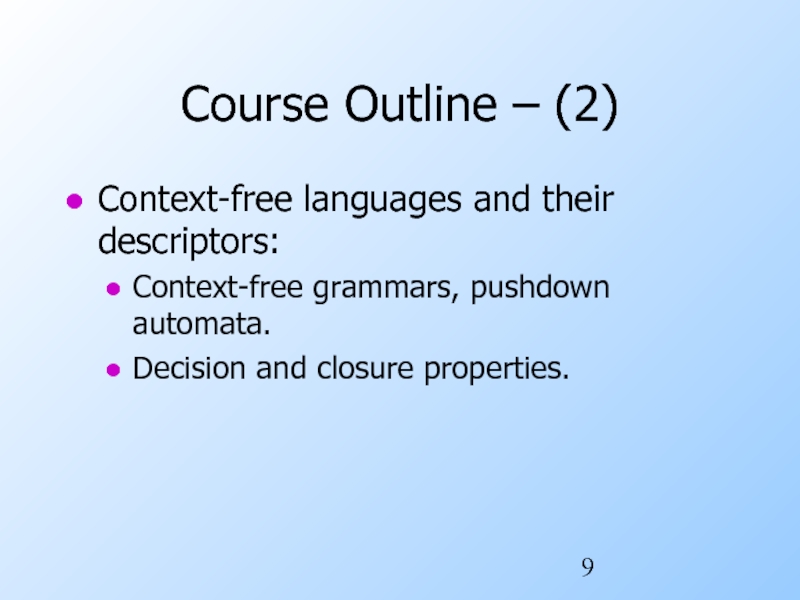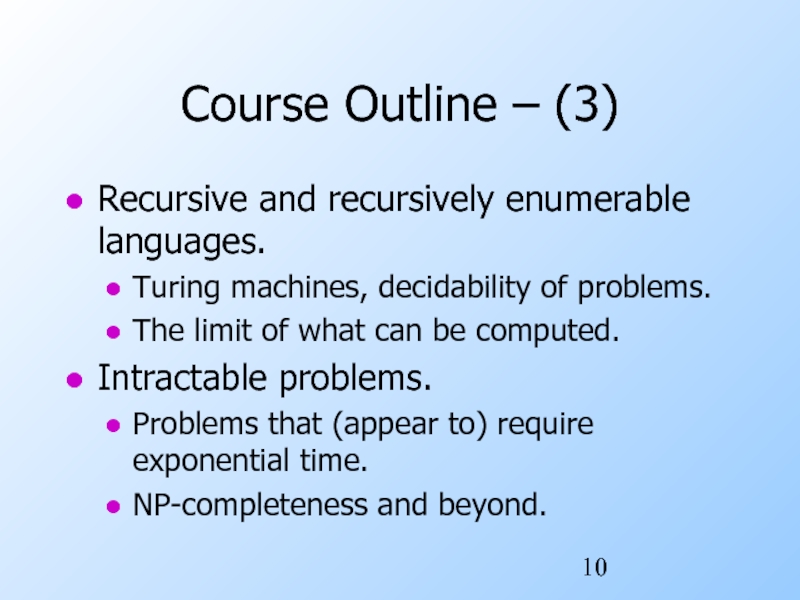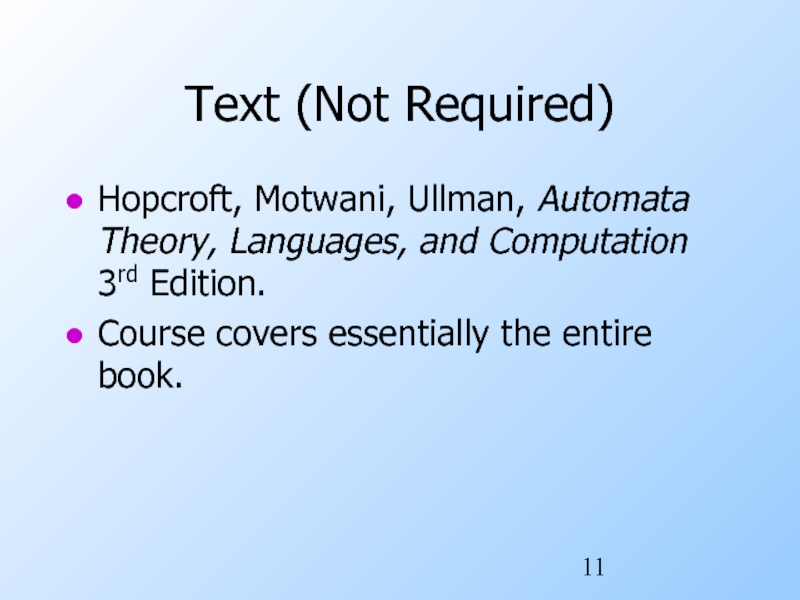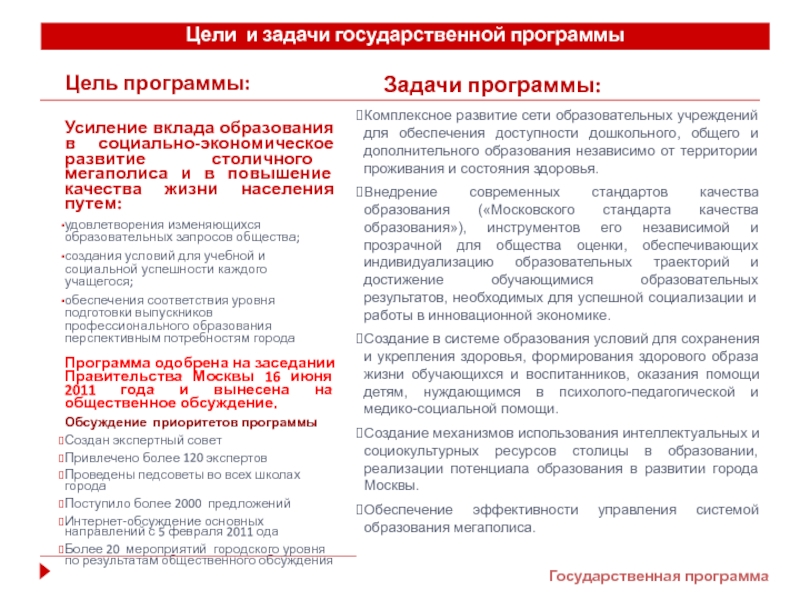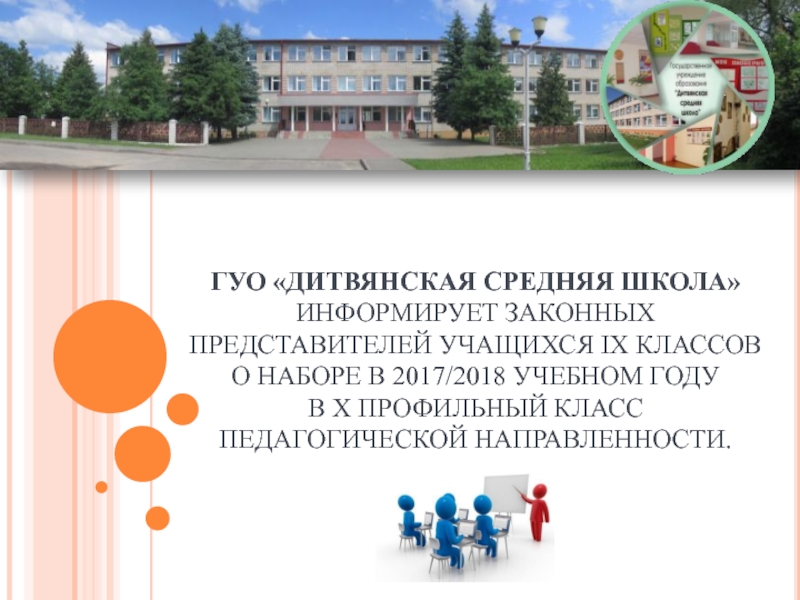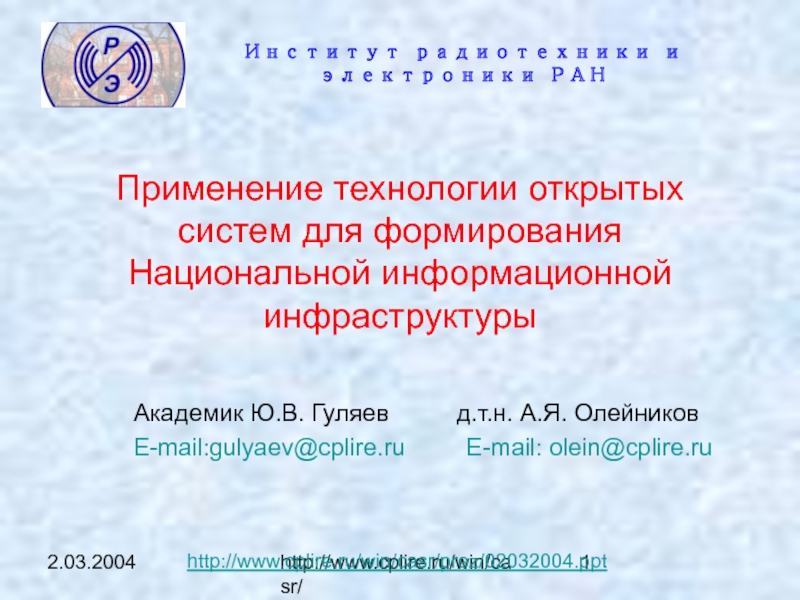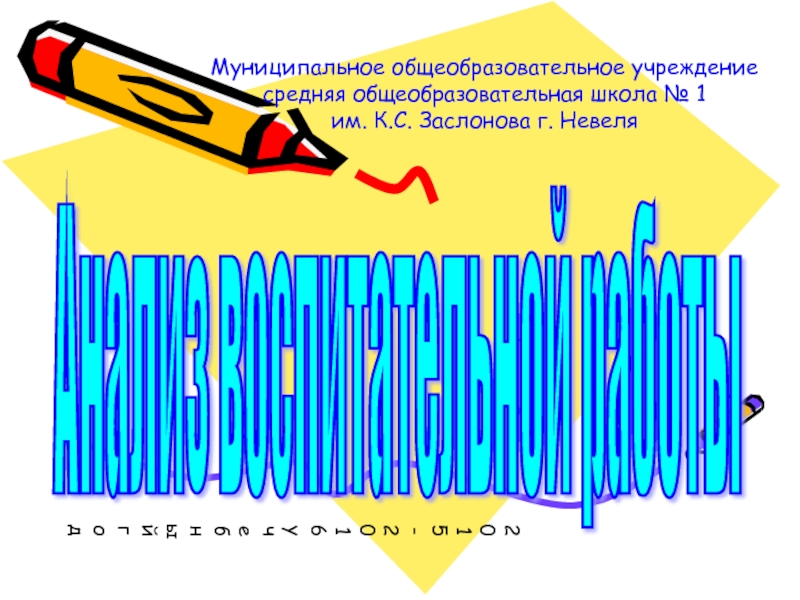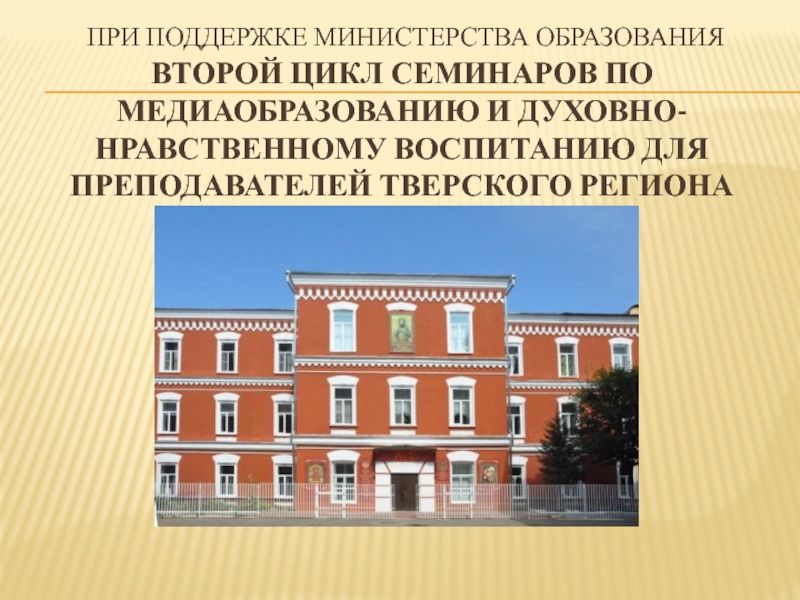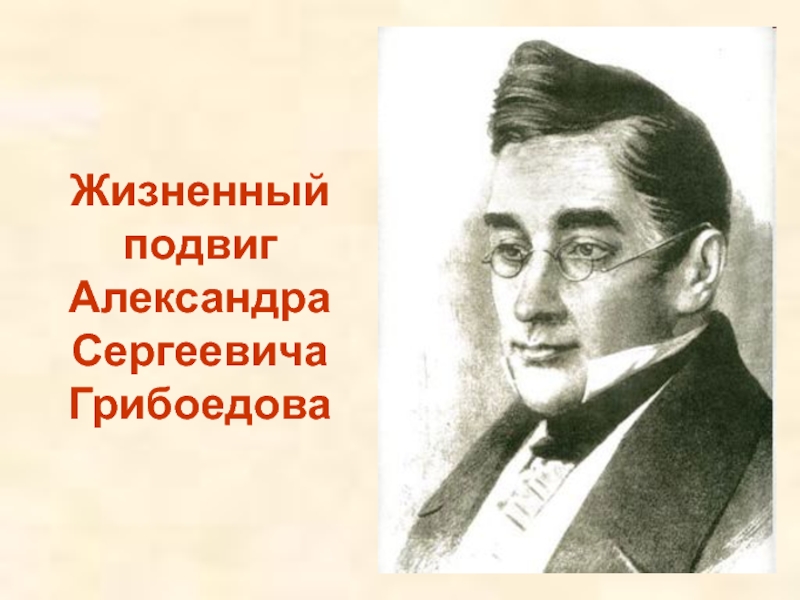is About
- Главная
- Разное
- Дизайн
- Бизнес и предпринимательство
- Аналитика
- Образование
- Развлечения
- Красота и здоровье
- Финансы
- Государство
- Путешествия
- Спорт
- Недвижимость
- Армия
- Графика
- Культурология
- Еда и кулинария
- Лингвистика
- Английский язык
- Астрономия
- Алгебра
- Биология
- География
- Детские презентации
- Информатика
- История
- Литература
- Маркетинг
- Математика
- Медицина
- Менеджмент
- Музыка
- МХК
- Немецкий язык
- ОБЖ
- Обществознание
- Окружающий мир
- Педагогика
- Русский язык
- Технология
- Физика
- Философия
- Химия
- Шаблоны, картинки для презентаций
- Экология
- Экономика
- Юриспруденция
Welcome to the Stanford. Аutomata theory презентация
Содержание
- 1. Welcome to the Stanford. Аutomata theory
- 2. Why Study Automata? A survey of Stanford
- 3. How Could That Be? Regular expressions are
- 4. How? – (2) Context-free grammars are used
- 5. How? – (3) When developing solutions to
- 6. Other Good Stuff We’ll learn how to
- 7. Automata Theory – Gateway Drug This theory
- 8. Course Outline Regular Languages and their descriptors:
- 9. Course Outline – (2) Context-free languages and
- 10. Course Outline – (3) Recursive and recursively
- 11. Text (Not Required) Hopcroft, Motwani, Ullman, Automata
Слайд 2Why Study Automata?
A survey of Stanford grads 5 years out asked
which of their courses did they use in their job.
Basics like intro-programming took the top spots, of course.
But among optional courses, CS154 stood remarkably high.
3X the score for AI, for example.
Basics like intro-programming took the top spots, of course.
But among optional courses, CS154 stood remarkably high.
3X the score for AI, for example.
Слайд 3How Could That Be?
Regular expressions are used in many systems.
E.g., UNIX
a.*b.
E.g., DTD’s describe XML tags with a RE format like person (name, addr, child*).
Finite automata model protocols, electronic circuits.
E.g., DTD’s describe XML tags with a RE format like person (name, addr, child*).
Finite automata model protocols, electronic circuits.
Слайд 4How? – (2)
Context-free grammars are used to describe the syntax of
essentially every programming language.
Not to forget their important role in describing natural languages.
And DTD’s taken as a whole, are really CFG’s.
Not to forget their important role in describing natural languages.
And DTD’s taken as a whole, are really CFG’s.
Слайд 5How? – (3)
When developing solutions to real problems, we often confront
the limitations of what software can do.
Undecidable things – no program whatever can do it.
Intractable things – there are programs, but no fast programs.
Automata theory gives you the tools.
Undecidable things – no program whatever can do it.
Intractable things – there are programs, but no fast programs.
Automata theory gives you the tools.
Слайд 6Other Good Stuff
We’ll learn how to deal formally with discrete systems.
Proofs:
You never really prove a program correct, but you need to be thinking of why a tricky technique really works.
We’ll gain experience with abstract models and constructions.
Models layered software architectures.
We’ll gain experience with abstract models and constructions.
Models layered software architectures.
Слайд 7Automata Theory – Gateway Drug
This theory has attracted people of a
mathematical bent to CS, to the betterment of all.
Ken Thompson – before UNIX was working on compiling regular expressions.
Jim Gray – thesis was automata theory before he got into database systems and made fundamental contributions there.
Ken Thompson – before UNIX was working on compiling regular expressions.
Jim Gray – thesis was automata theory before he got into database systems and made fundamental contributions there.
Слайд 8Course Outline
Regular Languages and their descriptors:
Finite automata, nondeterministic finite automata, regular
expressions.
Algorithms to decide questions about regular languages, e.g., is it empty?
Closure properties of regular languages.
Algorithms to decide questions about regular languages, e.g., is it empty?
Closure properties of regular languages.
Слайд 9Course Outline – (2)
Context-free languages and their descriptors:
Context-free grammars, pushdown automata.
Decision
and closure properties.
Слайд 10Course Outline – (3)
Recursive and recursively enumerable languages.
Turing machines, decidability of
problems.
The limit of what can be computed.
Intractable problems.
Problems that (appear to) require exponential time.
NP-completeness and beyond.
The limit of what can be computed.
Intractable problems.
Problems that (appear to) require exponential time.
NP-completeness and beyond.
Слайд 11Text (Not Required)
Hopcroft, Motwani, Ullman, Automata Theory, Languages, and Computation 3rd
Edition.
Course covers essentially the entire book.
Course covers essentially the entire book.
